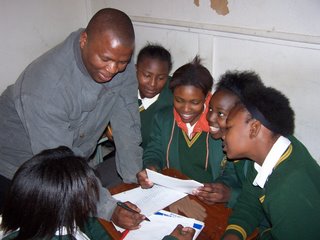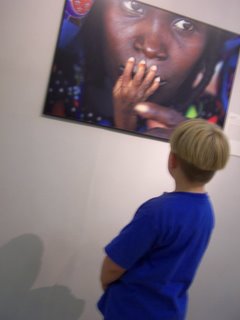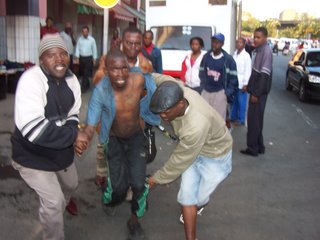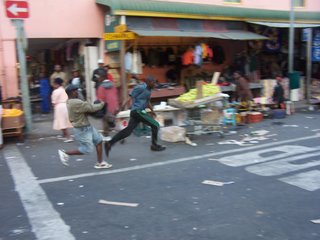GRAMADOELAS RESTAURANT: A CHANCE TO BREAK BREAD WHERE THE RICH AND FAMOUS HAVE DINED. THEN TALK TO THE OWNER & LEARN REAL S.A. HISTORY!
And if you go, introduce yourself to the owners: Eduan Naude' or Brian Shalkoff. We asked Brian about the handsome, authentic African/Cape Dutch decor and found ourselves enthralled with a 20-minute lecture about the history of South Africa. The talk was given as we walked around the restaurant, admiring all the various artifacts that represent indigenous Africa or the Cape Dutch history.
Mr. Shalkoff made note of the fact that most Afrikaners sided with Germany in World War One...and did the same when Nazi Germany rose up under Adolph Hitler, resulting in the Second World War. I asked him about his ethnicity and he responded that he was a Lithuanian Jew. He related how his mother was from Chelmo, Lithuania.
Interesting how my Holocaust training at Yad Vashem in Jerusalem seems to always be there when I need it. Brian and I discussed the Holocaust and how over 200,000 Lithuanian Jews were put to death at the hands of Hitler's henchmen. He lost several family members to the Nazi terror.
The buffet had finally been set by the able wait-staff at the restaurant...and my family and I began our sumptuous adventure into what is referred to as "fusion cuisine." Translated that meant tribal African, Arab, Cape Dutch, exotic game meats, fish delicacies, Malay curries, and a range of tempting desserts featuring everything from brandied pears to a rich cheesecake, buried in fresh strawberries.
Did I mention Cape wines? Gramadoelas features an extensive wine list, loaded with the best of the best Cape vintage wines. Svetlana had a merlot red and I opted for a couple of Windhoek light beers. Delightful!
We also met and talked to Eduan Naude', the older of the two owners. It seems in his youth he designed clothing and one of the photographs hanging on the wall as you enter the restaurant features Miriam Makeba dressed in a fashion piece designed/created by the then-17-year-old Eduan. He's very proud of that photograph and I would be too if there any association with Ms. Makeba.
And the list of notables that have dined at Gramadoelas? Check this out: Her Majesty Queen Elizabeth II, Nelson Mandela, The Queen of Denmark, Hillary Clinton (why would they have her next to a queen?), Bill Clinton (what they list him next to Elton John because Bill is a pretty good saxophone player?), Elton John, Mrs. John Major, the daughter of Winston Churchill, Lady Soames. Then "lesser" persons such as Catherine Deneuve, Denzel Washington, David Bowie, Stevie Wonder, Harry Belafonte, Nadine Gordimer, and finally the famed anthropologist, Phillip Tobias.
Quite an impressive list of folks who dropped by for a bite to eat, huh? I made sure that I sat in the very same seat where Nelson Mandela ate a late supper back in 1999, I think Brian said. It was a memorable evening and we will never forget the cuisine that prompted a French food writer to say, "If you are foolish enough to want to eat outside France, and you happen to be in Johannesburg, try the Gramadoelas."
Well, I don't know about all that silliness by a French food writer, but we do know the place is just damn good, plain and simple. Most of all I'll remember the walk through history given to me by Mr. Brian Shalkoff. And I'll never forget the change in the look on his face when he described Hitler's Holocaust and what it did to his Lithuania.





